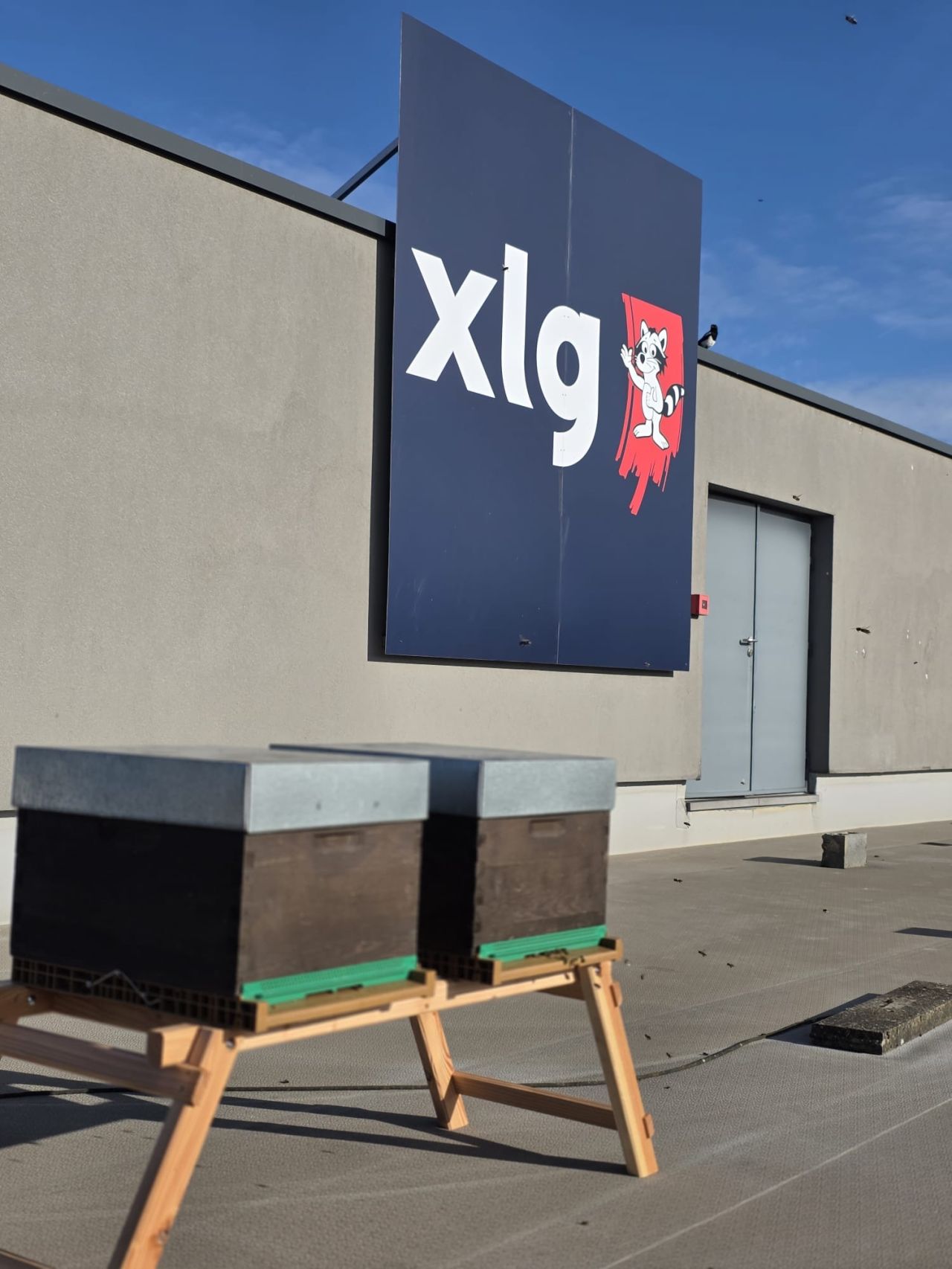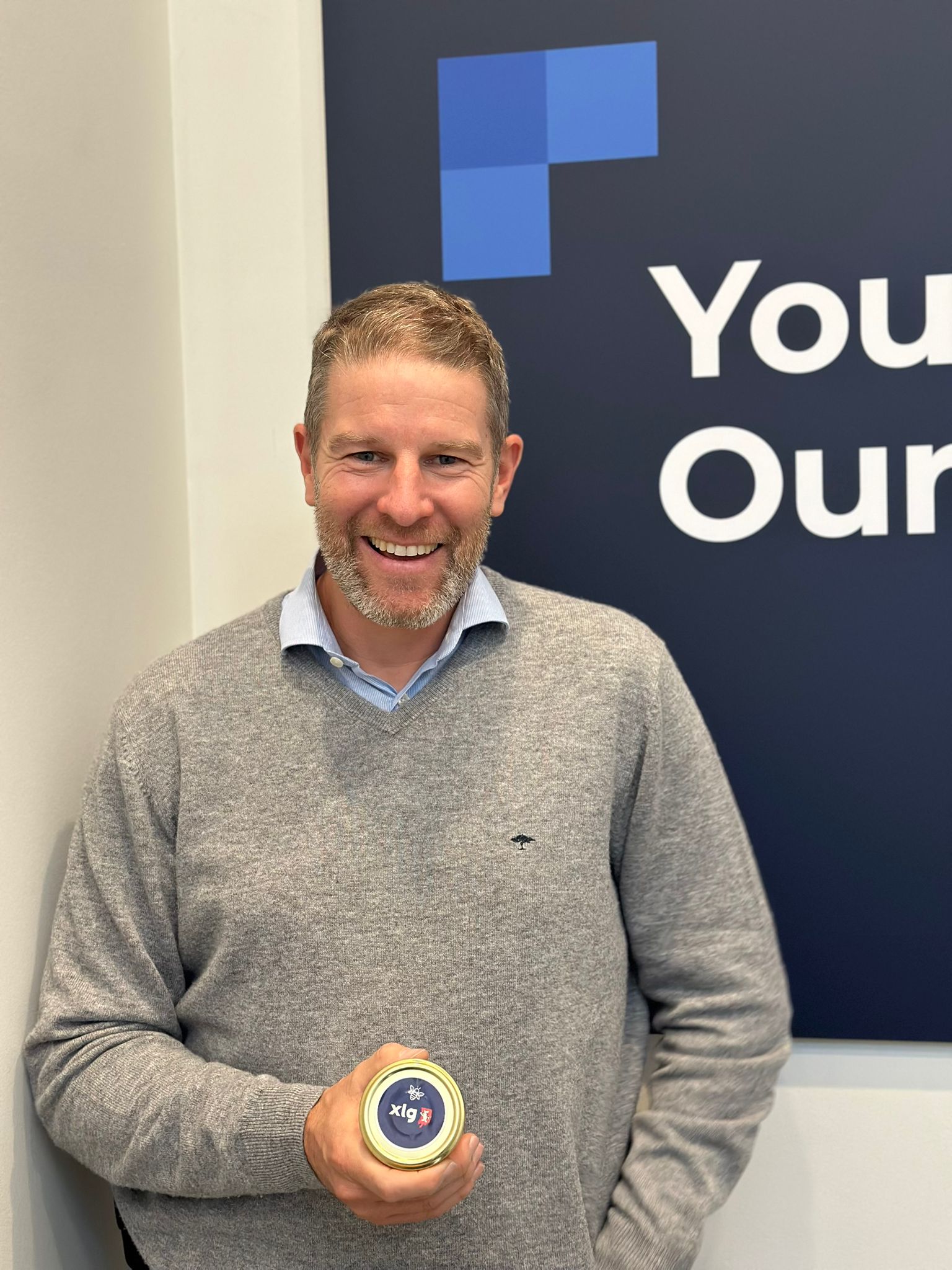XLG commits to biodiversity: 6 beehives installed on our sites in Wallonia!
At XLG, we believe that taking action for the planet also means taking care of the living beings that surround us.
That's why we recently installed 6 beehives on three of our sites: 2 in Milmort, 2 in Jumet and 2 in Suarlée 🐝.
These new inhabitants - more than 300,000 bees - have quickly made their mark and are already participating in local pollination, contributing to the preservation of biodiversity and the balance of our ecosystems.

Why install bees?
The facts are alarming: 75% of insects have disappeared in just 27 years. Yet over 80% of wild plants depend on pollination to survive (Source: The Week).
And without pollinating insects, the entire food chain - including birds - is weakened.
By installing these beehives, we want to take concrete action to support nature, while raising awareness among our teams and customers of the importance of biodiversity.

A well-thought-out project
At XLG, we know that biodiversity is built over time. That's why we don't just install beehives. Aware that honeybees can sometimes compete with wild insects, we have set up complementary initiatives to preserve the local balance:
Since 2023, XLG has been investing in a bio-credit project in Nandrinwhich aims to strengthen the ecological network on local farmland.
This ambitious project aims to recreate biodiversity corridors by planting hedges, flower meadows and nutrient cover:
🌳 630 meters of triple-row hedges, made up of 23 species of native trees and shrubs, i.e. nearly 2,700 plantations representing 3,780 m² of hedges;
🌼 Flower meadows that attract pollinating insects and encourage the return of local species;
🌾 Nurturing canopies, providing food and shelter for wildlife (insects, birds, small mammals...).
Hedgerows are true reservoirs of biodiversity: they provide shelter, nesting sites and sources of food (pollen, nectar, seeds, insects).
By recreating these ecosystems, we are actively participating in the protection of living organisms, the maintenance of soils and the resilience of our environment.
And this year, we were proud to harvest our first honey from the Nandrin project!
A honey produced by the black bee, a local and hardy species, in an area of high biological value financed by XLG.
Proof that our actions in favor of biodiversity are bearing fruit - or rather, their honey.
These actions are fully in line with our ESG approach, at the heart of which lies our mission: to act for a sustainable future, serving buildings, people... and the planet.

What about today?
Our first honey, a concrete symbol of this commitment, illustrates how local initiatives can generate a global impact. But this is just the beginning: we are continuing our efforts to strengthen biodiversity around our sites, develop sustainable actions and raise awareness of environmental protection among our teams.
In the meantime, everyone can contribute in their own way:
- Plant nectar flowers (marigolds, lavender, sunflowers, etc.).
- Limit mowing before the end of flowering
- Buy local honey from a beekeeper
- Use bee-friendly products
Want to make your green spaces more sustainable?
At XLG, we are constantly evolving to combine technical expertise and respect for nature in the maintenance of your sites.
Let's discuss it! Together, let's make your green spaces a haven for life.
%20-%20Small.webp)
.png)

